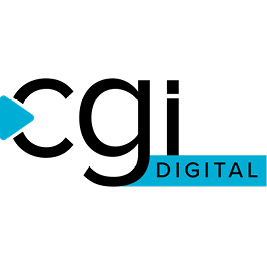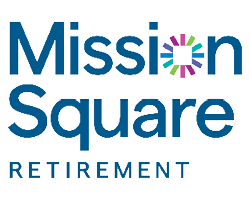By Frank J. Martin
“By making an effort to stay put and be responsible to place, rather than be quite so mobile as Americans generally are, we might begin to improve the quality of our civic life, our municipal life. We might even get more people turning out to vote because they have a stake in local elections as well as national elections” Gary Snyder—American Poet, Professor, and Environmental Activist
The conversations of some of our more affluent neighbors in the cities and towns across our country that are experiencing an increase in crime, a perceived increase in crime, or the increased visibility of our unhoused neighbors have veered toward a dangerous idea: “if things don’t change, we are going to leave.” Unfortunately, it is this mindset of optionality—a willingness to pull up stakes and move on—that prevents positive changes from occurring. Commitment to the cities in which we live is a foundational requirement for their success. Leaving the option to relocate open arrests the development of behaviors that are beneficial to civic engagement.
The ability to move is, of course, a privilege that many in our communities simply do not have. Commitment by those with the means to leave ensures that our cities and towns thrive for those who can leave and, perhaps most importantly, for those who cannot. Naming commitment as the foundational element of thriving cities posits that the actions of the committed create greener pastures, rather than the mobility of the affluent discovering them. By starting with advocating for commitment, cities and towns will begin to see the knock-on effects of this small, but meaningful, shift in mindset.
President John F. Kennedy turned the relationship between citizen and country on its head when he told us to: “Ask not what your country will do for you, ask what you can do for your country.” It is a worthy aspiration, but perhaps too hard of an ask for many people to act upon. I wondered what similar, but more actionable, ask could be made by our nation’s mayors and civic leaders. I believe that much can be accomplished by simply asking one thing—that people commit to their city. Commitment is the bedrock of a thriving relationship and it’s the bedrock necessary to make our cities and towns work. Once a city’s or town’s residents are committed to their city for the long run, their actions and behaviors change because their personal interests—including the pursuit of a happy, healthy, safe, and meaningful life—become inextricably linked with the interests of the city. Their city’s success becomes a necessary element to achieving their life’s goals.
Policies
Once the mindset of maintaining an option to pull up stakes has been put aside, city residents have only one choice if they want their city to function in a manner that meets their desired life—ensure that the policies of their city are aligned with their values. This makes participation in the local political process essential since participation is the only way to ensure this alignment occurs. How much time and attention one pays to local political matters is directly correlated to one’s commitment level. We can learn from the behavior of real estate developers in this case without taking any normative position on real estate developers specifically or money in politics generally. Real estate developers are some of the most active participants in our nation’s local elections. Why? Because they make long term economic commitments by buying land and planning the construction and completion of complex projects, which can take a decade from conception to completion. Commitment, in this instance born from the desire for the profits that come from the success of a project that is specific to an exact location, drives their participation.
Investment in Public Resources
Once we are mentally committed to the city for the long run, everything in the city matters significantly more—the quality of the public schools, the beauty of the parks, the effectiveness of public services, the responsiveness of the police and fire departments, and countless other things that have an impact on our daily lives. Working to bring about positive change and investing time and resources in their success become much easier once the “useful life” of the public good or service is determined. The world of finance provides helpful frameworks to understand this behavioral change. Before being able to determine the value of any asset, public or private, we must have a sense of its useful life. If I know that I’m going to live near a city park for the next ten years, the amount of upfront investment in time and money that I am willing to spend increases dramatically from the amount that I would consider if I believed I would only be there for a short period of time. If I have a reasonable sense of the amount of time an asset will be useful to me (often called its durability) and a sense of the value I would get from using that asset during each year of its useful life, I can figure out how much time and resources I would be willing to spend today on improvements that I will enjoy for years to come.
Let’s say a neighborhood improvement group is collecting donations and asking for volunteer hours to install a new picnic area in a nearby park. Reducing the thought experiment to money, let’s estimate that I will get $25.00 of annual value out of using the new picnic area. If I am unsure of how long I will live near the park, then donating much more than $25.00 seems both unlikely and irrational from an economic perspective. But what about a 5-, 10-, or 20-year horizon? A $100 donation would have a four year “payback period” ($100/$25=4), a shorter period, in fact a much shorter period potentially, than its useful life. Another way to think about the picnic set’s value is to take its total useful life and multiply that by the annual value I would derive from my use during each of those years. Using 10-years as its useful life, I would get $250 in nominal value. Various factors like inflation, time value of money, depreciation, and unforeseen events would reduce the amount I’d be willing to donate below $250, but the thought experiment helps illustrate the concept broadly. The exact numbers are not important, but assigning value to each year of use and understanding a public asset’s useful life based on my plan to stay in my city changes my investment decisions. Commitment itself changes the calculus.
Relationships
As the Brookings Institution rightly notes, “neighborhoods are the building blocks of cities.” For many, their civic life and their experience of their city is derived mostly from their relationship with their neighborhood because it is their neighborhood where they spend most of their time. Neighborhood involvement is predicated on investing time and energy in building personal relationships with neighbors. That expenditure of time and energy, in a world with many competing demands for our attention, only makes sense if we are planning to be rooted in our neighborhood for the long run. Once that decision has been made, civic involvement—perhaps focused initially or even exclusively on our neighborhood—becomes a natural outgrowth. This is especially true in neighborhoods where others have made the same commitment. Neighbor helping neighbor is the atom, the smallest and most fundamental unit, of civic engagement.
Perfecting the ask
Mayors, city council members, civic leaders and civic boosters all want their cities to thrive. They work hard to develop policies and programs that serve their constituents. They often make appeals to their constituents around specific policies or needs and can excite communities with innovative solutions to specific issues facing their towns. But I rarely hear them focus their rhetoric and appeals on the most foundational element needed to make our cities work—commitment. Support for specific policies and programs is good but asking city residents simply to commit to the city where they live, first and foremost, will inspire and activate durable civic engagement unlike any other appeal.
Frank J. Martin is an attorney and former non-profit board member and executive who lives in Oakland, California. He served as Interim Executive Director of the UC Berkeley School of Law’s East Bay Community Law Center, Board Chair of YR Media (formerly Youth Radio), and Treasurer of Centro Legal de la Raza. He is the co-creator of the “Benefit Fund,” a new form of impact investing that deepens the alignment between investment returns and tangible public benefits to society.



